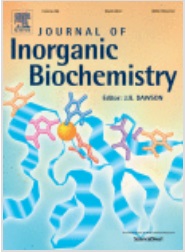The present study is focused on the development of liposomes bearing gadolinium chelate (GdLip) providing two functionalities for magnetic resonance imaging (MRI) and photodynamic therapy of cancer. A lipid derivative of gadolinium(III) diethylenetriamine pentaacetic acid salt (GdDTPA1) was inserted in the liposomal membrane and served as MRI contrast agent whereas a zinc phthalocyanine (ZnPc) was used as a model photosensitizer. In addition to conventional liposomes, pegylated lipids were used for the preparation of “stealth” liposomes. The characterization of different GdLip formulations involved evaluation of the liposomes size by nanoparticle tracking analysis, thermal phase behavior by differential scanning calorimetry and ZnPc-mediated singlet oxygen production. Furthermore, relaxivity measurements were performed as well as cytotoxicity and photodynamic activity against cancerous and normal cell lines was studied. Size and thermal behavior were only slightly influenced by GdLip composition, however it distinctly affected singlet oxygen production of ZnPc-loaded GdLip. The quantum yields of singlet oxygen generation by zinc phthalocyanine incorporated in GdLip containing cationic or/and pegylated lipids were smaller than those obtained for non-pegylated carriers with l-α-phosphatidylglycerol. In general, all formulations of GdLip, irrespectively of composition, were characterized by relaxivities higher than those of commercially used contrast agents (e.g. Magnevist®). NMR study has shown that the incorporation of ZnPc into the formulations of GdLip increases the relaxation parameters r1 and r2, compared to the values for the non-loaded vesicles. GdDTPA1 did not influence the photodynamic activity of ZnPc against HeLa cells.

